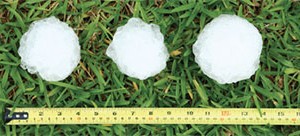Traditional insurance products focus on risk transfer. Insurers compete based on their ability to use historical loss information, data gathered during the submission process and other data from third-party data aggregators to predict the likelihood of future claims and price risk transfer products appropriately. With more and more data available in the current hyperconnected world, there are emerging opportunities for insurers to expand their product and service offerings.
Executive Summary
Learnings from early IoT experiments about customer adoption, roles and responsibilities, and conditions for generating ROI need to happen in every use case. And even though the answers may be different from one case to the next, the approach of The Hartford's IoT Innovation Lab is highly repeatable, according to Dan Campany, the head of the Lab and CM Guest Editor Matteo Carbone. Here, they describe lessons learned from using water damage prevention technology for the insurer's construction segment customers; the overall benefits of IoT in supporting real-time mitigation, behavioral change of insureds and enhanced underwriting for the insurer; and the ultimate goal of transforming commercial insurance products to incorporate IoT into fee-based services beyond core risk transfer.In this respect, a key technology is the Internet of Things, which connects people and objects to the Internet, allowing remote transmission of information about people and things. IoT data is unique relative to the data insurers traditionally use to price risk. It is more granular and continuously refreshed, meaning individual assets and environmental conditions can be tracked in detail, in real time, all the time.
For an insurance company, that means that more data and information about clients’ and industries’ exposures, perils and incidents are available. Using this data makes it possible even to predict incidents and address risky situations proactively to avoid injuries, property damage or other types of claims scenarios.
In general, the average maturity of IoT adoption in the insurance industry is low and varies substantially by coverage line. While many insurers are experimenting with different IoT-based concepts, IoT has not yet been adopted on a scalable basis by the large majority of insurers. Personal auto and home are the most widespread IoT use cases in insurance, whereas commercial applications are largely still in experimentation and incubation. While many insurers clearly see the potential applications for IoT, they are still figuring out how to make the transition from “interesting technology” to “scalable ROI.”



































